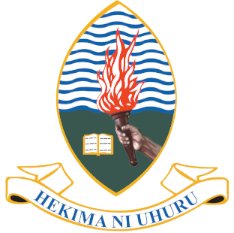NEW STRUCTURE OF THE ACADEMIC UNITS
3.1 CATEGORIES OF ACADEMIC UNITS
The Universities Act No. 7 of 2005 provides for the establishment of campus colleges, constituent colleges, connected colleges, associate colleges, faculties, schools, institutes, departments, libraries, and centres. Accordingly, and as is normal practice in many other universities, the academic units of the University of Dar es Salaam (UDSM) Main Campus are hereby re-structured into three levels. The first level consists of departments, which continue the tradition of serving as the hub of teaching and research activities. Colleges, schools and institutes comprise the second level, which assume a greater role than was hitherto the case, especially in decision-making and in implementing programmes. The third level is constituted by the central administration whose main function is to provide leadership, vision, strategic planning and quality control.
As a result of the adoption of this structure, all hitherto existing faculties at the UDSM have ceased to exist and the relevant colleges and schools assume their places and roles.
In the current organisation, the term “College” is adopted and used to refer to a division of the university which offers at the undergraduate level a general “liberal arts” education designed to impart knowledge and skills for an enlightened citizenry. Such a nomenclature is consistent with the history and origin of universities from medieval times. On the other hand, the term “School” is adopted to refer to a division of the university which apart from general education offers from the beginning a complete programme of professional training such as law, medicine, education, dentistry, business studies, librarianship etc. In the present structure, the administrative head of a college is called Principal and that of school a Dean while that of an institute a Director. In principle Deans and Directors of teaching academic units assume and enjoy equal status.
Schools offer integrated and self-contained training programmes that prepare students for their vocation. As such, schools are encouraged to run such programmes without the need for creating departments except in situations where establishment of departments is deemed to enhance efficiency and effectiveness. In the context of colleges, an internal reorganization of departments has been carried out with a view to making them larger and robust in order to take advantage of the economies of scale and scope. Colleges and schools with small departments have been encouraged to coalesce and amalgamate such units to create larger and more viable departments.
The following are the criteria that UDSM academic units must meet in order to gain recognition as full-fledged academic department:
The benchmark of 20 academic members for each department has been established in order to enable members of the department to conduct research and go on local or sabbatical leave without adversely affecting the teaching and auxiliary duties of the department. A pre-existing department deemed relevant but with a lower number of staff than 20 may be approved, but only if its aspiration to reach that number within 3-5 years is explicit and feasible.
SEE the ATTAMENT Below

